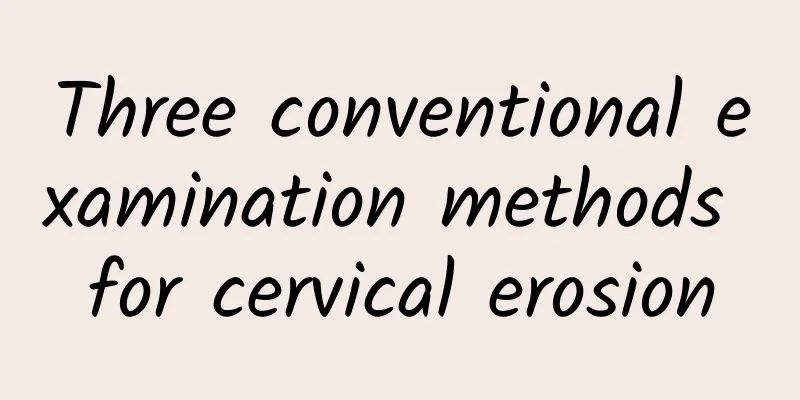Three conventional examination methods for cervical erosion

|
Cervical erosion is a common pathological change of chronic cervicitis. It can be transformed from acute cervicitis or directly develop into cervical erosion without the symptoms of acute cervicitis. Some unmarried women may have cervical erosion-like appearance, but without inflammation. This is a physiological change, not erosion. Cervical erosion should be confirmed through professional routine examinations for symptomatic treatment. 1. Visual observation method The naked eye observation method is very simple to operate and the examination price is also very cheap. It is a gynecological examination method suitable for the general public and can detect at least 2/3 of the lesions. Currently, the World Health Organization (WHO) recommends the use of naked eye observation in developing countries. After smearing the cervix with acetic acid white staining 3%-5% acetic acid solution, observe the reaction of the cervical epithelium to acetic acid, and then take a biopsy from the white lesion area for further examination. 2. Cervical cytology Cytology is a method of using a wooden scraper or a small brush to scrape or brush the exfoliated cells on the surface of the cervix and observe the morphological changes of the cells under a microscope. There are two main methods of cervical cytology currently used. One is the traditional Pap smear method, which is less used. The other is liquid-based cytology, which uses a special small brush to brush along the surface of the cervix and the endocervical canal for several circles to collect more cells. After computer processing, it can be made into a single layer of cells, which can be clearly seen by doctors during diagnosis, which can improve the accuracy of diagnosis. 3. Pathological examination of cervical biopsy This examination method involves taking a small piece of tissue from the site of lesion indicated by the colposcopy and sending it for pathological examination for confirmation. This is the gold standard for diagnosing cervical lesions. |
<<: What are the reasons for irregular menstruation in women after childbirth?
>>: Four types of physiological ovarian cysts
Recommend
Can I exercise if I have cervicitis?
Cervicitis is a common type of gynecological geni...
How many hours after taking the medicine for abortion
Medical abortion is a common method of terminatin...
What medicine should I take for cervical erosion and leucorrhea?
According to the survey and statistics of gynecol...
How long does it take to cure pelvic effusion?
How long does it usually take to cure pelvic effu...
A must-have for fighting cancer and losing weight! Freshly made five-color fruit and vegetable juices make you healthy and beautiful
Oriental Billy is an artist with experience in fi...
The magical lemon vinegar has an upgraded weight loss power, is it more powerful than lemon water? Famous weight loss doctor: Beware of hidden "sugar trap"
Lemon can be called a "green weight loss fru...
What are the symptoms of cervical erosion? 4 common symptoms of cervical erosion
The main symptoms and phenomena of cervical erosi...
Can Western medicine hospitals treat functional uterine bleeding?
Functional uterine bleeding, also known as DUB, i...
Why do I only have my period once every two months?
Why do I only have my period once every two month...
What are the main causes of pelvic inflammatory disease?
Pelvic inflammatory disease is a common gynecolog...
Will uterine fibroids affect pregnancy? What are the effects of uterine fibroids on pregnancy?
As people's living standards generally improv...
How to use medicine for vulvar itching
Vulvar itching is a problem that many people don&...
Causes of invasive hydatidiform mole
An invasive hydatidiform mole is a morbid pregnan...
Abdominal pain uterine fibroids what to check color ultrasound uterine fibroids what to do B ultrasound
What to check for abdominal pain and uterine fibr...
How to treat second-degree cervical erosion? 4 treatment options for second-degree cervical erosion
Cervical erosion is a common disease among women....









